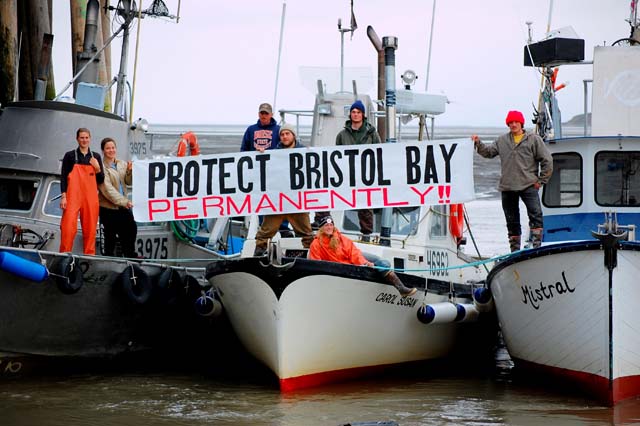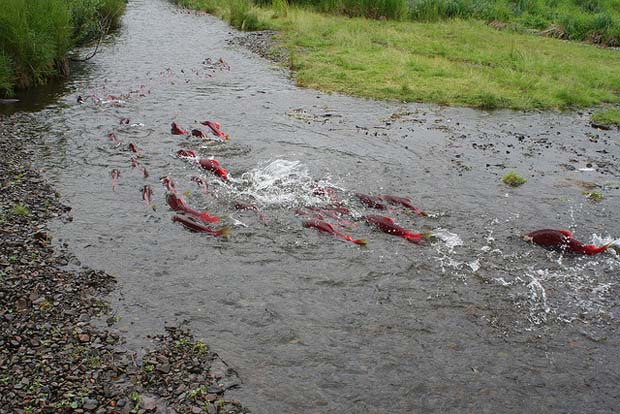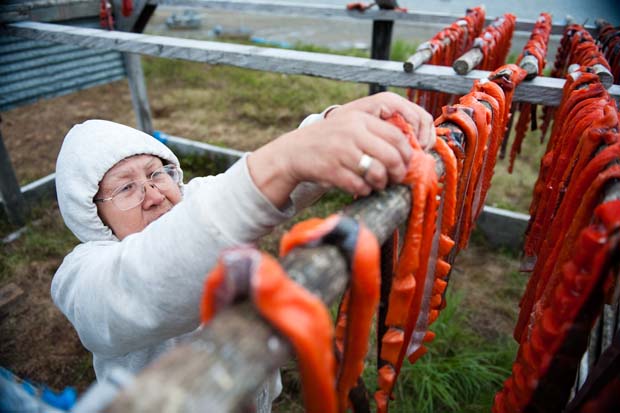[dropcap]N[/dropcap]ame the environmental fight, and it’s often framed as Save Nature v. Jobs & Development. In one corner is the granola-eating, Birkenstock-wearing, tree-hugging hippie, and in the other corner is Exxon Mobil.
Not so with Pebble Mine. Frankly, not even close.
(And, for the record, not so with many other environmental battles, but the case against Pebble Mine really turns that knee-jerk storyline on its head.)
The proposed Pebble Mine – also known as The Worst Idea Ever – would be a 2,000-foot-deep, two-mile-long gold and copper mine with massive earthen dams built to hold back some 10 billion tons of mining waste in the heart of Alaska’s Bristol Bay region, a huge road-less area in southwest Alaska that’s home to brown bears, wolves, caribou, freshwater seals and countless birds.
Bristol Bay is also home to the world’s most valuable wild salmon fishery – gorgeous, delicious, healthy, wild sockeye salmon – and that’s where the Nature v. Jobs narrative comes to a grinding, screeching halt.
A new report, “The Economic Importance of the Bristol Bay Salmon Industry” commissioned by the Bristol Bay Regional Seafood Development Association, explains in detail just how economically vital the region’s salmon fishery is.
For starters, Bristol Bay’s salmon fishery “typically supplies almost half of the world’s wild sockeye salmon,” and “in 2010, harvesting, processing, and retailing Bristol Bay salmon and the multiplier effects of these activities created $1.5 billion in output or sales value across the United States.”
That’s billion with a “B” for those of you keeping score at home. (Lame baseball reference, I know, but I’m a Cubs fan, and I love and miss Harry Caray, and the Cubs are horrible, as always, yet I still can’t help myself. I digress; my apologies.)
Some more fun facts:
The Bristol Bay salmon fishery supports 12,000 jobs in fishing and processing industries – including 4,369 fishing and processing jobs in Alaska, 3,227 in Washington, 2,143 in Oregon, 553 in California, and 1,629 in other states.
The salmon fishery creates an additional 7,800 jobs across the country through the multiplier effects of retailing in grocery stores, restaurants, etc. and the development of value-added products.
The commercial fishery provides about $500 million in direct income to workers across the country every year.
In 2010, Bristol Bay salmon fishermen and fisherwomen harvested 29 million sockeye salmon worth $165 million in direct harvest value alone. That represented 31% of the total Alaska salmon harvest value, and was greater than the total value of fish harvests in 41 states.
The total value of Bristol Bay salmon product exports in 2010 was about $250 million, or about one-sixth of the total value of all U.S. seafood exports.
Are you catching my Frisbee? When it comes to jobs and the economy, the Bristol Bay salmon fishery is, for lack of a better term, a gold mine. A beautiful, priceless, one-of-a-kind, wild-ass gold mine.
To read complete story click here […]





